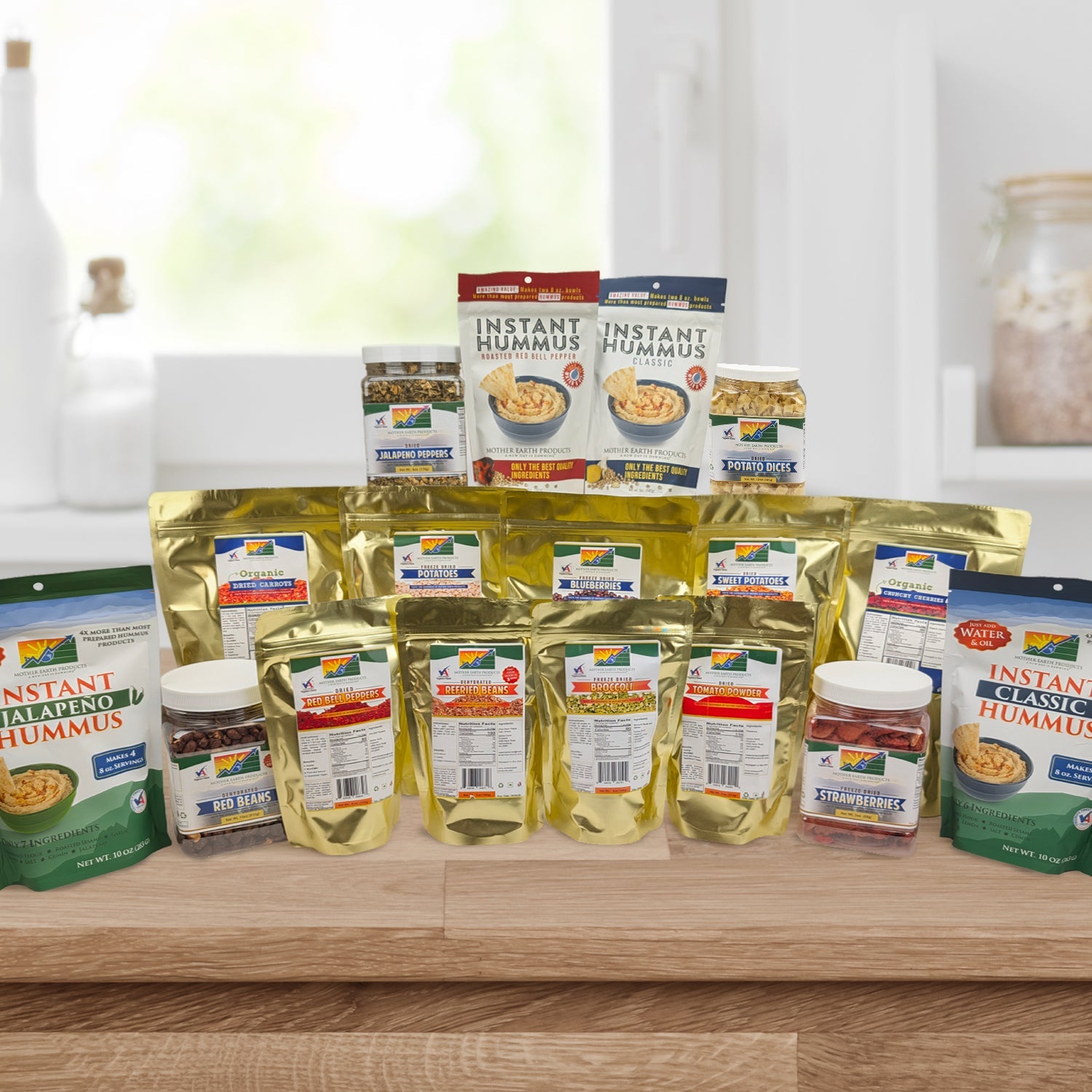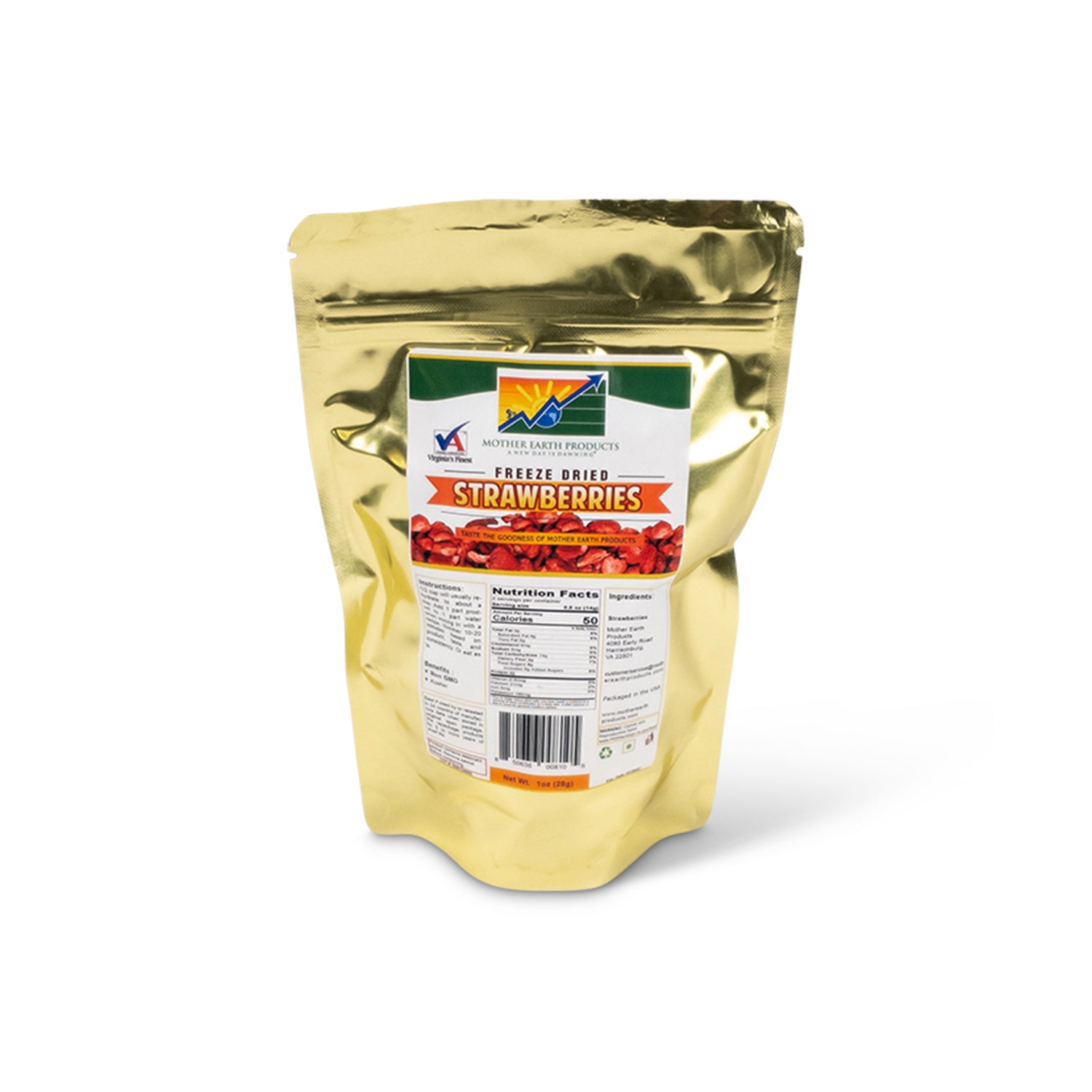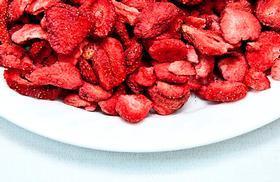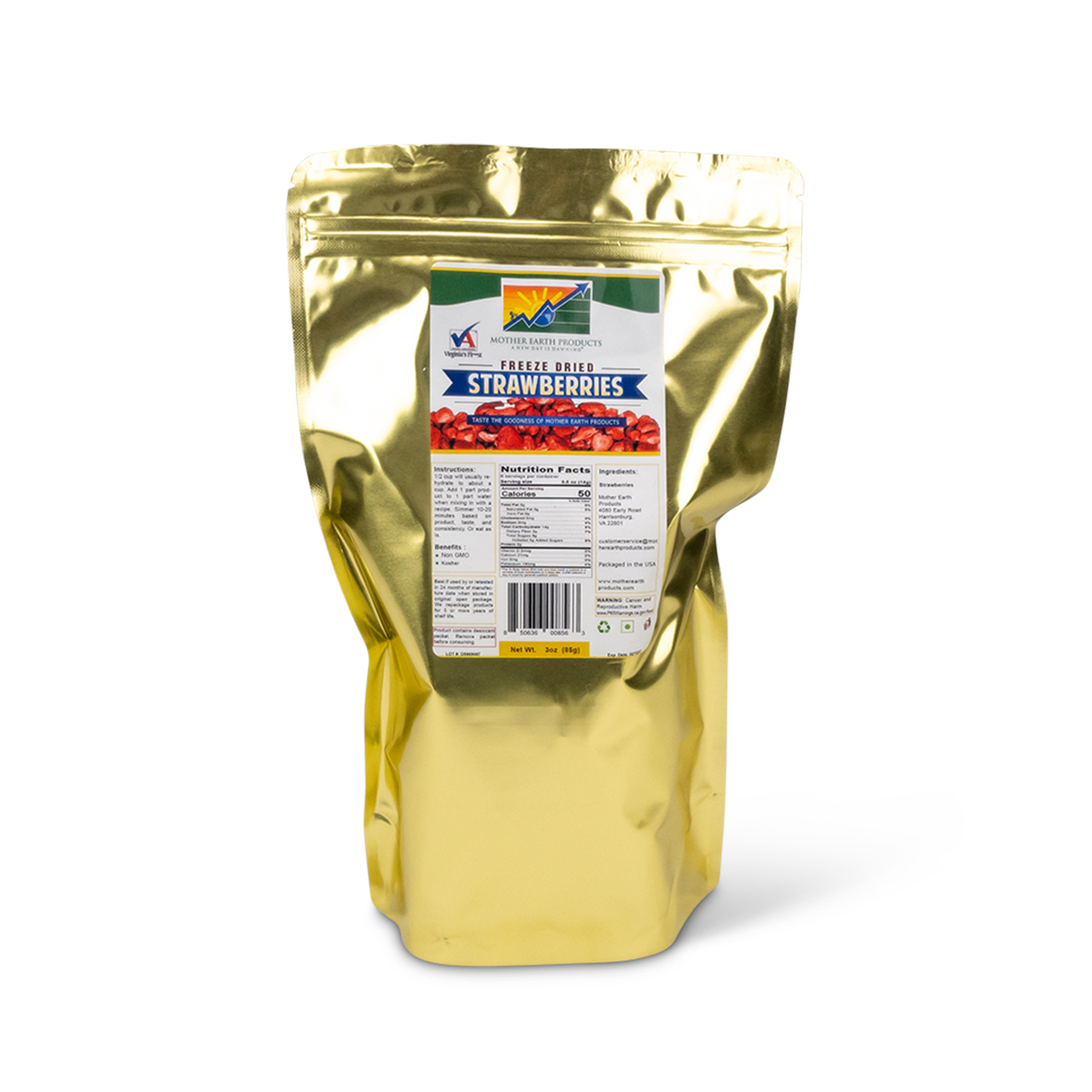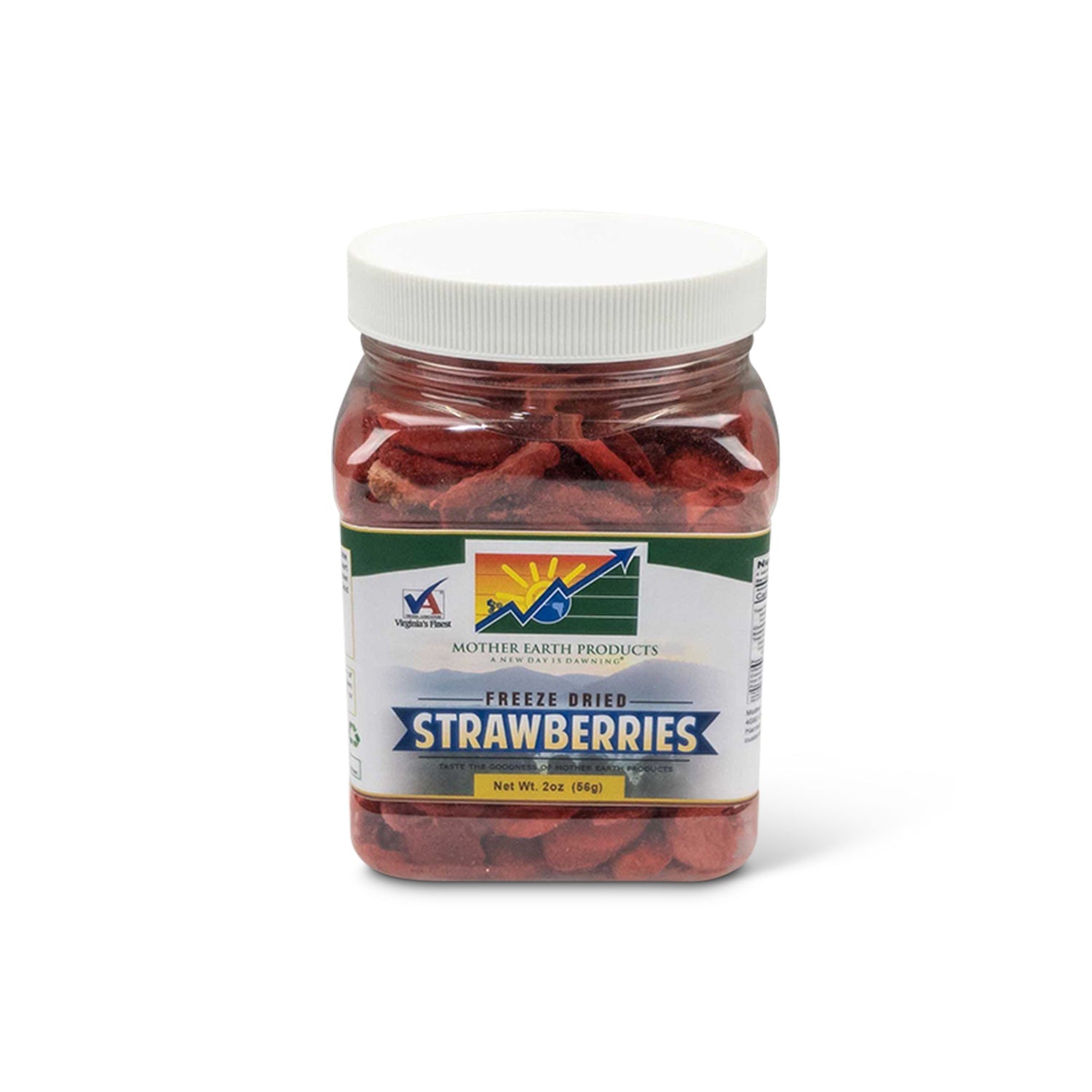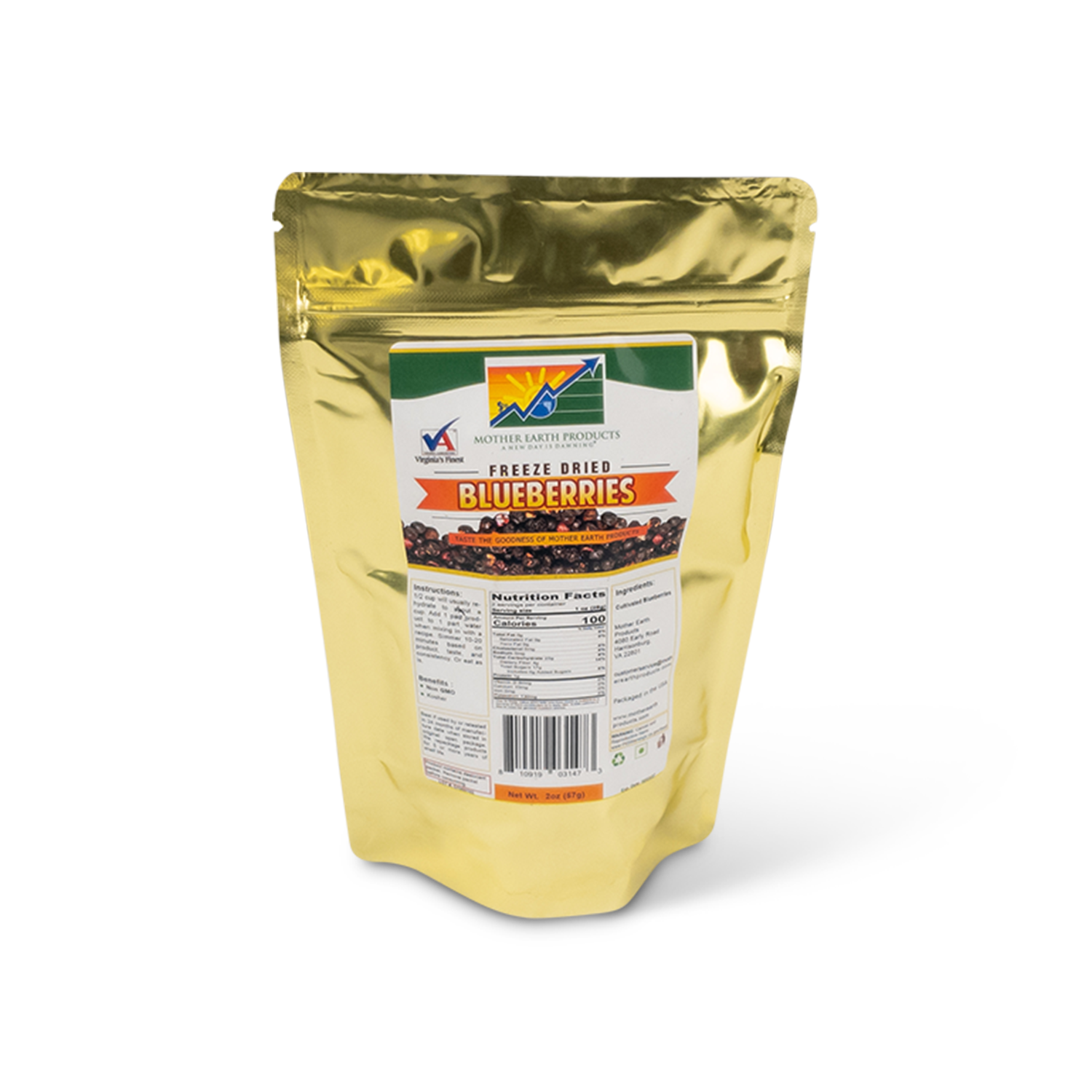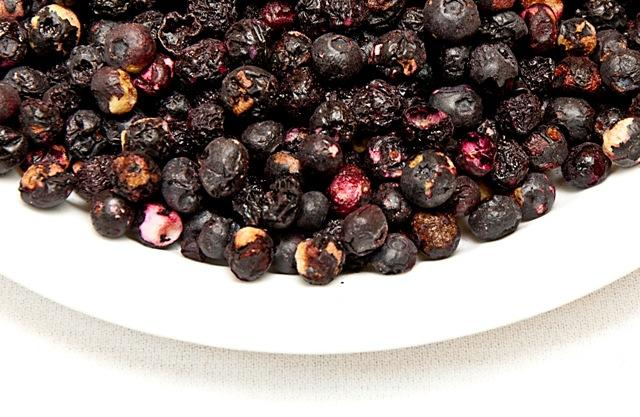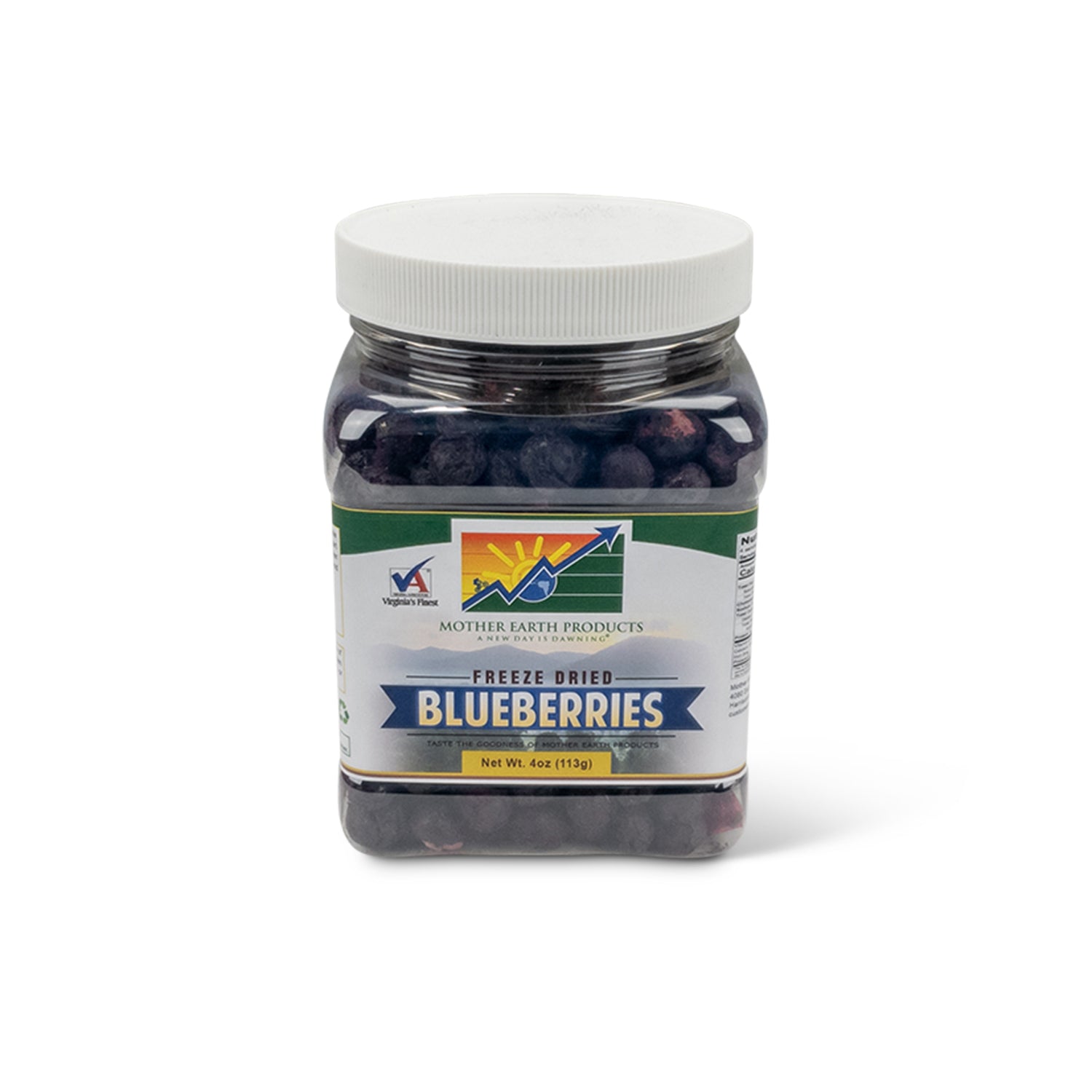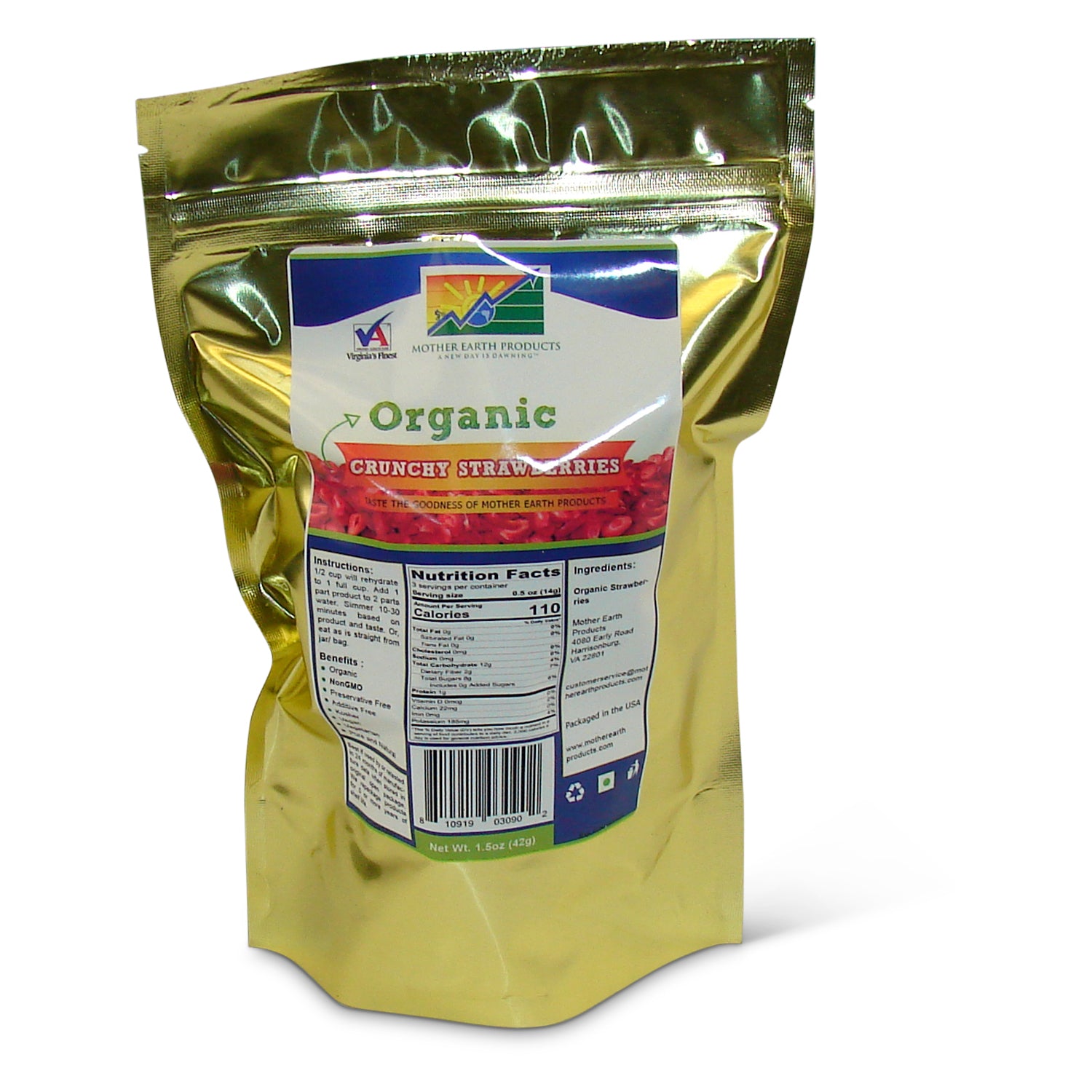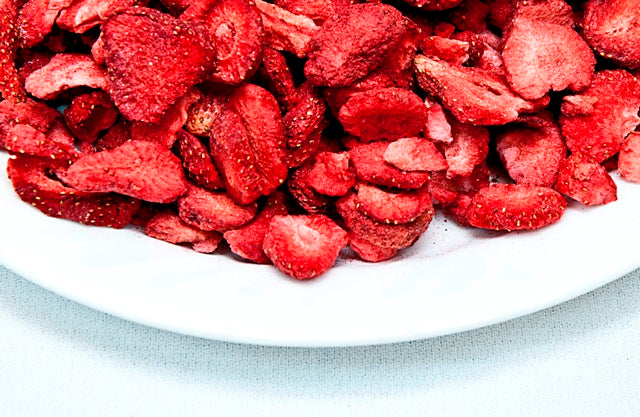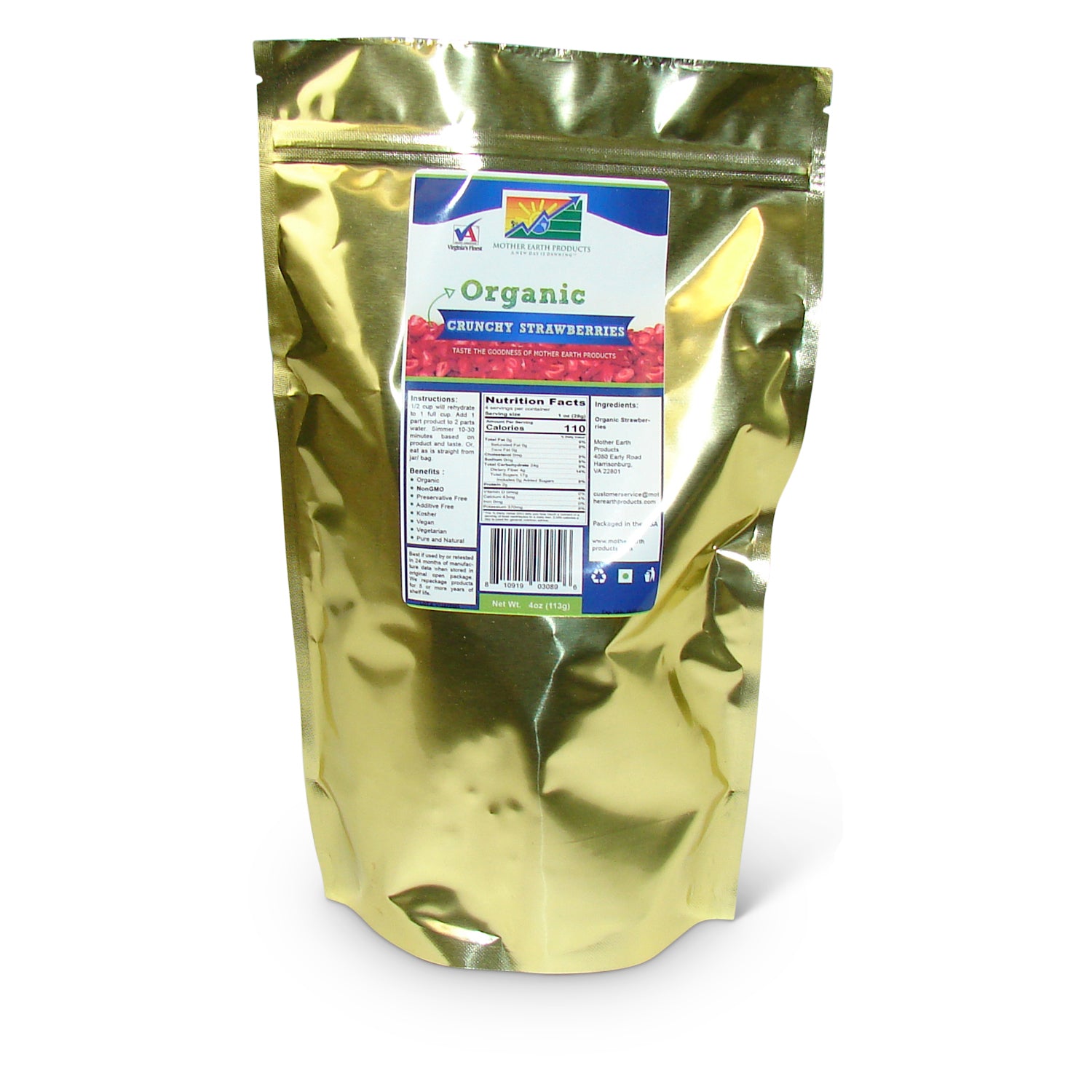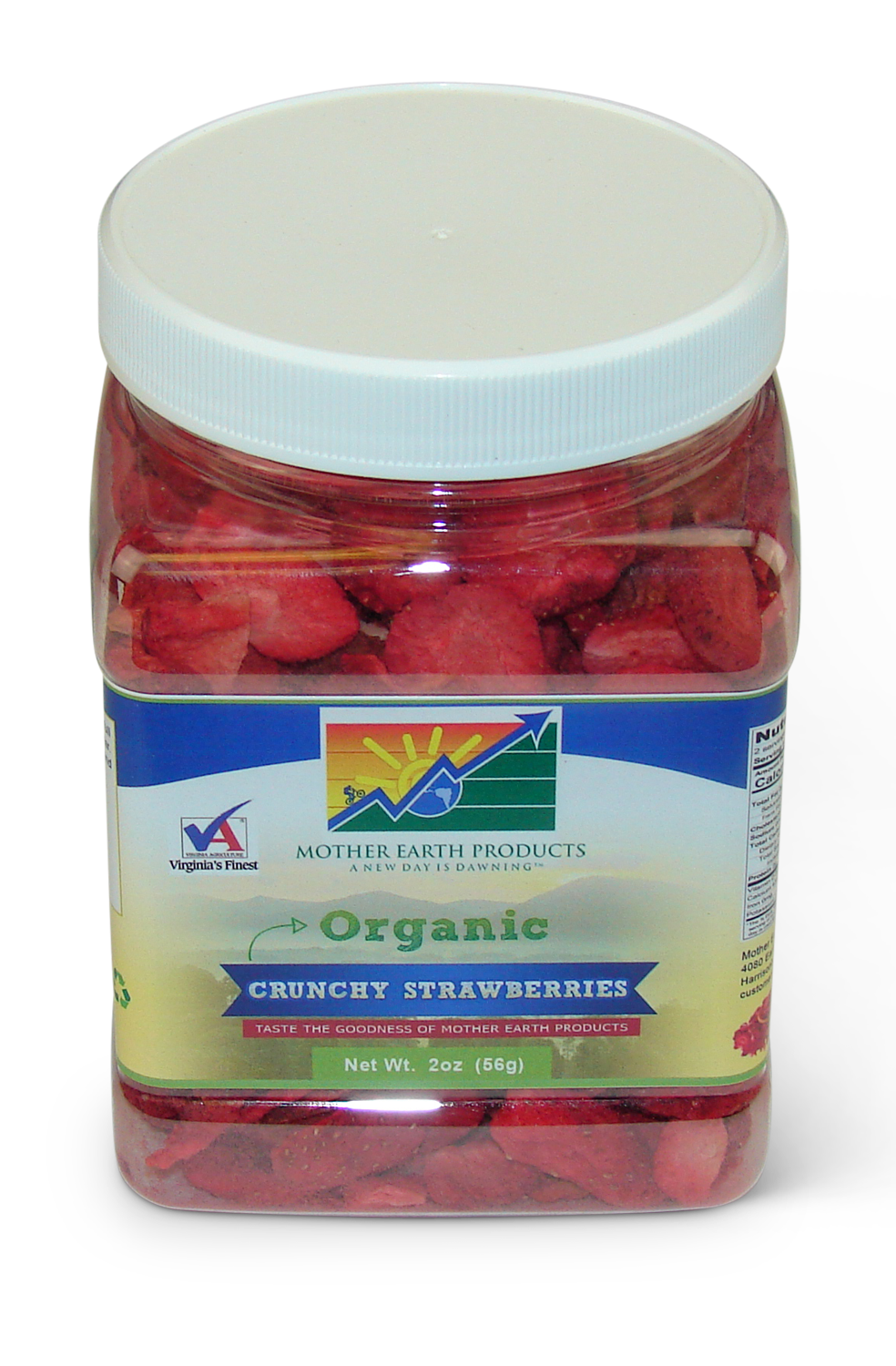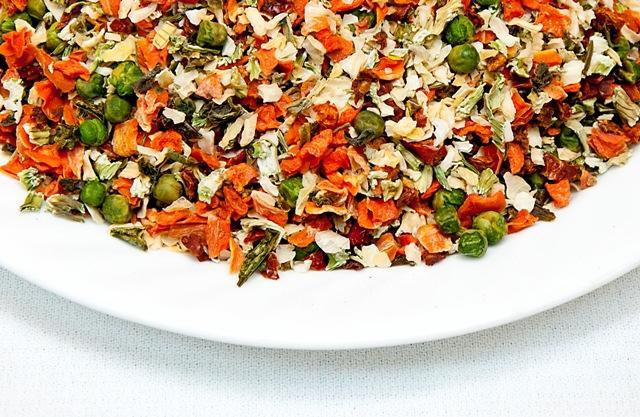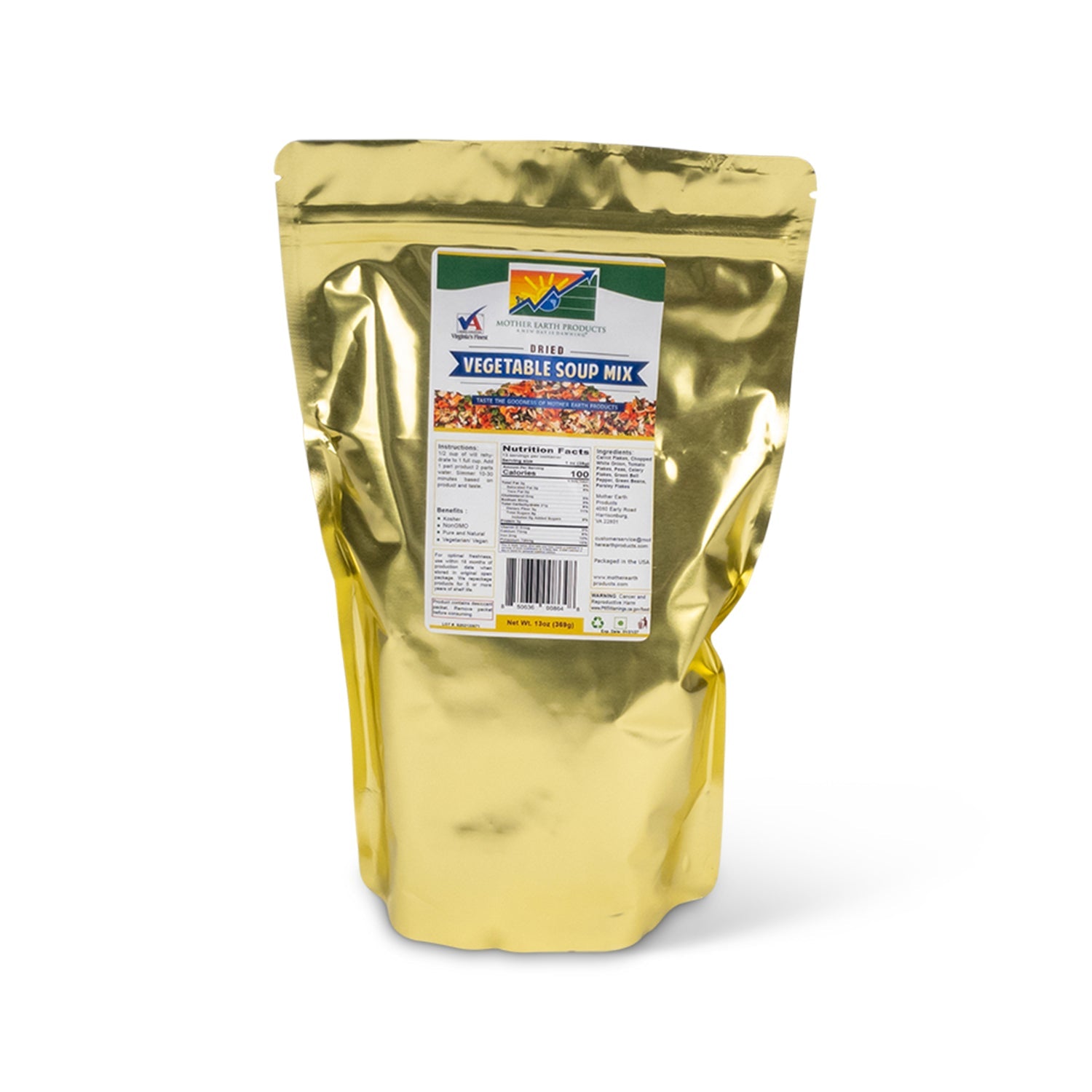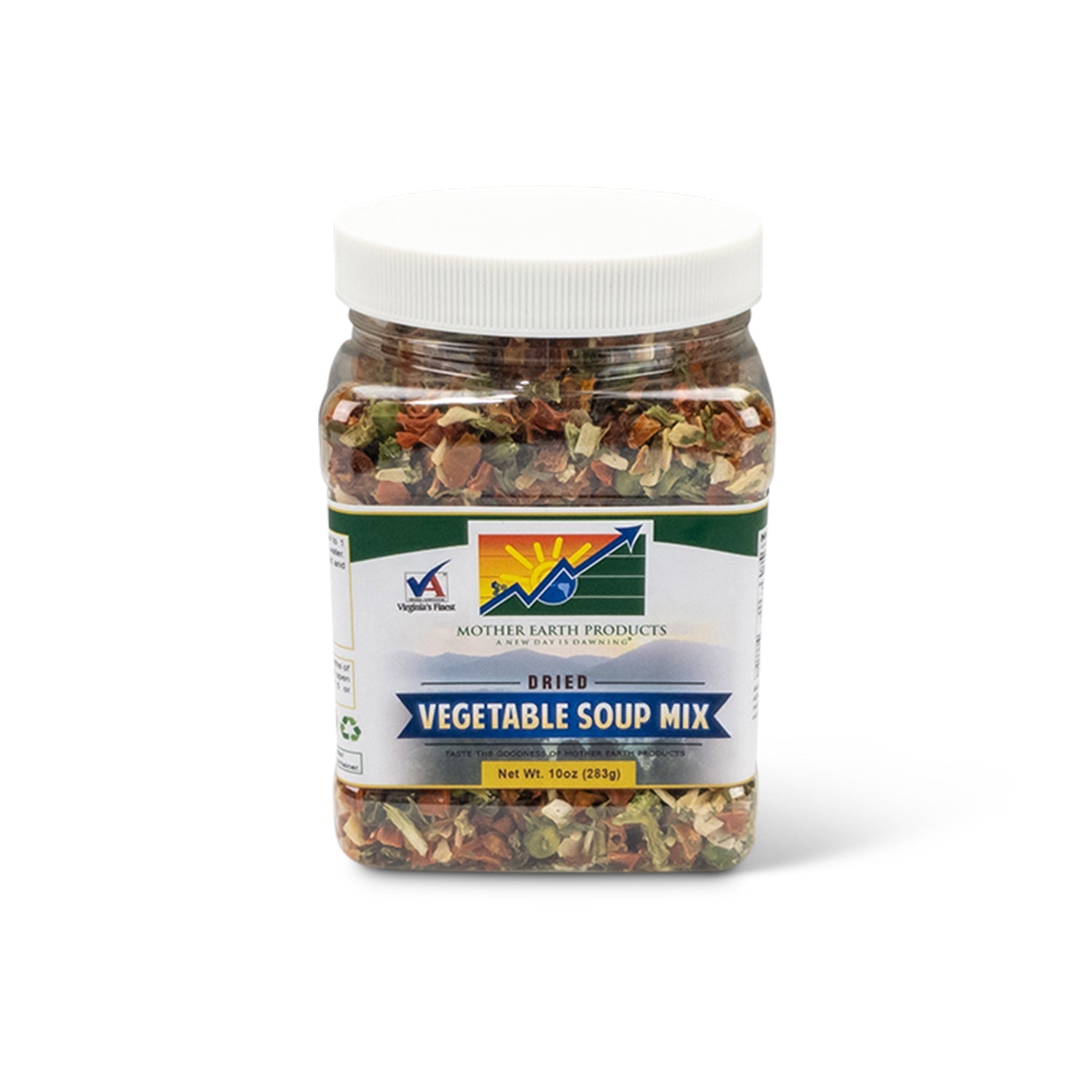There's nothing like that first bite of a peach to ring in the summer season, or a bowl of cabbage soup to welcome winter into our homes. Yes, seasonal produce has always been a great way to sync with the seasons and enjoy their delicious bounty.
However, in the past decades, eating seasonally isn't a priority for most people as our favorite fruits and vegetables are available year-round. We can thank food engineering and fast transportation for that!
The thing is, though, that while convenience is key, caring for our health is even more important. This means that eating by the seasons should be a lifestyle and not just an option.
So, if you need more reasons to jump on the "healthy eating" bandwagon, these five benefits of eating seasonal produce year-round will do the trick. Plus, we share one tip on how to eat seasonally, even if your favorite fruits and vegetables are out of season, so read on. PS: It involves dehydrated and freeze dried food.
What is Seasonal Produce?
Seasonal produce refers to fruits and vegetables that are grown and harvested during a specific time of the year. Temperatures that vary over the year are the main reason why certain crops grow and thrive during a particular season in a region. So, for example, warmer temperatures allow cherries, bell peppers, and grapes to grow during summer, while lower temperatures facilitate the growth of cool-season produce, like oranges, onions, and carrots, during winter.
Benefits of Consuming Seasonal Produce Year-Round
• It's Nutritionally Richer
Fruits and vegetables that grow out of season can't follow the natural ripening rhythms. To deal with this problem, farmers use ripening agents(1) (chemicals, gasses, etc.) that slow down maturation and allow them to produce crops all year long. However, studies show that this farming technique yields less nutritious fruits and vegetables than naturally ripened (a.k.a. seasonal) produce(2).
Also, the seeds of off-season produce are often modified to resist disease and grow in larger quantities when planted in a different growing season. These modifications may diminish the nutritional value of the crops.
• It's Cheaper
Another benefit of seasonal produce is that they often cost much less than off-season fruits and vegetables. That's mainly because transportation costs are cut off. Also, if local production is high, produce can be sold at lower prices. One recent study(3) puts this theory into perspective: Cantaloupes cost 36% less in peak season than when sold off-season.
• It Tastes Better
Aiming for quantity instead of quality, commercial farms focus more on the crops' volume and appearance than the way they taste(4). Factors such as larger yields, uniform ripening, and better shipping quality are the main focus of high-scale plant breeders, and that shift in focus often leads to tasteless crops.
However, local farmers usually don't set such genetic improvements as their main priority. Their main goal is to produce the best possible crops with what nature offers, whether it's abundant sunlight in the summer or the necessary moisture in the winter. As a result, their crops taste and smell better than their genetically modified "cousins" and tend to have a more natural texture.
• It's Less Likely to Be Contaminated by Chemicals
Every country has its own regulations about using herbicides, pesticides, and fungicides to support farming. However, more often than not, off-season produce is transported from one country to another. When you consume fruits and vegetables that are out of season (meaning they're produced in another country where the climate allows it), you basically accept all the chemicals that have been infused in said crops. In other words, you provide all these chemicals with a first-class ticket to your plate.
That's not the case with seasonal produce, as they often grow in weather-appropriate conditions, meaning they get everything they need to grow (sunlight, soil nutrients, etc.) from the surrounding environment and not artificially.
• It's Good for the Environment
Consuming produce in season is also an excellent way to reduce your carbon footprint and protect the environment. In fact, by opting for local and seasonal fruits and vegetables instead of their out-of-season counterparts, you eliminate the need for a growth hormone-driven farming system and the subsequent transportation(5), both of which contribute to the emission of greenhouse gasses.
Just think about it: How many resources (from pesticides to grown hormones) did it take to produce an out-of-season strawberry? And how far did it travel to reach your local supermarket shelf once it was produced?
How You Can Eat Seasonal Produce (Even if They're Off-Season!)
Eating seasonally may come with many benefits. But, since we're used to enjoying a wide array of produce year-round, it's not always easy to make the switch. However, there's one way to still eat seasonally without eliminating certain fruits and vegetables from your diet. Say hello to freeze dried produce!
The treats are made through a process known as freeze drying, which removes all the water content from fresh, seasonal produce. As the water is removed, produce is easier to preserve and can last many years without going bad. That means you can enjoy your favorite fruit or vegetable (harvested in peak season) at any time of the year, even if it's not remotely in season.
4 Seasonal Produce Recipes That You Can Make Year-Round
• Winter
A cold-weather essential, this beef stew uses a wide array of winter's seasonal produce to warm our bodies and hearts during the cooler months, from potatoes to carrots.
Ingredients:
- 2 tbsp olive oil
- 6 cups textured soy protein (TSP) beef bits
- 1/3 cup dried carrots
- 2 1/2 cups freeze dried potatoes
- 1 tsp dried garlic (granulated)
- 6 cups vegetable broth
- 1/2 cup red wine
- 2/3 cup freeze dried peas
- 1/4 cup tomato paste
- 1/4 cup fresh parsley, chopped
- 1 tsp dried thyme
- Salt & pepper, to taste
Instructions:
- Fill a medium pot with warm water and add the beef. Soak for 15 minutes and drain away the water using a fine sieve. Squeeze away excess liquid and set aside.
- Add the olive oil to a large Dutch oven and heat over medium heat. Sautée beef for 10 minutes until slightly browned. Add onion, carrot, and 1/2 cup of warm water, and cook for another 5 minutes until the vegetables are slightly softened.
- Add garlic and tomato paste and cook for another 2 minutes until fragrant.
- Pour in the wine and broth and give a good stir. Add the thyme, salt, and pepper and bring to a boil. Cover with a lid and simmer for 45 minutes or until the beef is cooked through.
- Add the potatoes and peas and cook covered for 15 minutes until fork-tender. Ladle the stew into bowls and garnish with fresh parsley.
• Spring
As the temperatures rise, a new bounty of spring's seasonal produce appears, offering new and exciting ingredients (think strawberries and rhubarb) to those who cook according to the seasons.
Ingredients:
- 1 cup freeze dried strawberries (sliced)
- 1 cup rhubarb, thinly sliced
- 1/2 tsp cinnamon
- 1 1/4 cups granulated sugar
- 2 eggs
- 1/2 cup butter, softened
- 2 cups all-purpose flour
- 1 tsp vanilla extract
- 2 tsp baking soda
- 3/4 cup Greek yogurt
- 1/4 cup of full-fat milk or a milk alternative
Instructions:
- Add the strawberries and 2 cups of warm water to a bowl and soak for 15 minutes. Once hydrated, drain water with a fine sieve, squeeze slightly to remove excess liquid, and set aside.
- Preheat the oven to 350oF and grease a Bundt cake pan with cooking spray. Set aside.
- Mix the strawberries, rhubarb, cinnamon, and 1/4 cup of sugar in a bowl. Set aside.
- Add the butter, remaining sugar, and cream until light and fluffy in another bowl. Add the egg, one at a time, and then the vanilla extract. Whisk to combine.
- Add the flour and baking powder gradually and mix to combine. Finally, add the Greek yogurt and milk and whisk once again.
- Pour the batter into the Bundt cake pan and top with the strawberry-rhubarb mixture. Bake for 45 minutes or until a toothpick inserted into the cake comes out clean.
• Summer
Now that heatwaves are in full swing, summer's seasonal produce - such as, bell peppers, corn, and cherries - dominate our kitchens and plates. Juicy fruits and refreshing vegetables cool down our palates and make each meal a small adventure for the tastebuds.
Ingredients:
- 1 1/2 cups dried bell peppers (mixed)
- 2 tbsp olive oil
- 1/2 tsp dried garlic (granulated)
- 4 cups bow-tie pasta, uncooked
- 1 cup pesto
- 1/3 cup Parmesan cheese, grated
Instructions:
- Add the bell peppers and 2 cups of warm water to a bowl and soak for 15 minutes. Once hydrated, drain the water with a fine sieve and squeeze away excess liquid.
- Transfer the bell peppers to a small pan and toss them with olive oil and garlic. Sauté for 5 minutes over medium heat and set aside.
- Cook the pasta according to package instructions and place it in a large serving bowl.
- Stir in the pesto and peppers, and refrigerate for an hour to chill. Once ready to serve, top with the cheese.
• Fall
As nature's peak comes to a close, juicy fruits and vegetables make way for fall's seasonal produce, filled with earthy flavors and popping colors, whether apples, broccoli, or oranges.
Ingredients:
- 3 cups freeze dried broccoli
- 1/4 cup butter
- 1/3 cup dried onions
- 1/4 cup all-purpose flour
- 2 cups heavy cream
- 2 cups vegetable stock
- 2 cups Cheddar cheese, grated
- Salt & pepper, to taste
Instructions:
- Add the broccoli and 4 cups of warm water to a bowl and soak for 15 minutes. Once hydrated, drain the water using a fine sieve, squeeze away excess liquid, and set aside.
- Add the butter to a pot a melt over medium heat. Sautée the onion for 3 minutes. Add the flour, constantly whisking until you form a roux.
- Pour in the cream and stock and give another good stir.
- Add the broccoli, turn the heat low, and cook for 25 minutes until the vegetable is fork-tender.
- Season with salt and pepper, and stir in the cheese. Keep stirring until completely melted, and remove it from the heat. If you prefer smooth soups, puree using an immersion blender or enjoy chunky. Ladle into bowls and serve with toasted bread. Enjoy!
Do you eat by the seasons, or you're not a seasonal produce person? Let us know in the comments down below!
References:
- https://www.ncbi.nlm.nih.gov/pmc/articles/PMC4006172/
- https://www.ncbi.nlm.nih.gov/pmc/articles/PMC6521425/
- https://www.cambridge.org/core/journals/public-health-nutrition/article/patterns-of-fruit-and-vegetable-availability-and-price-competitiveness-across-four-seasons-are-different-in-local-food-outlets-and-supermarkets/9453CDA3DACEE965B5948DD011B77263
- https://www.ncbi.nlm.nih.gov/pmc/articles/PMC4942566/
- https://www.cambridge.org/core/journals/proceedings-of-the-nutrition-society/article/seasonality-and-dietary-requirements-will-eating-seasonal-food-contribute-to-health-and-environmental-sustainability/08545F71A12EF0FE233E8D1DEFEF227A
- https://www.delish.com/cooking/recipe-ideas/a23515497/easy-beef-stew-recipe/
- https://aprettylifeinthesuburbs.com/strawberry-rhubarb-bundt-cake/
- https://www.pickuplimes.com/recipe/grilled-red-pepper-pesto-pasta-314
- https://www.the-girl-who-ate-everything.com/panera-broccoli-cheese-soup/



